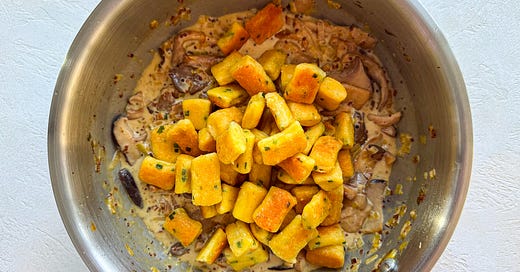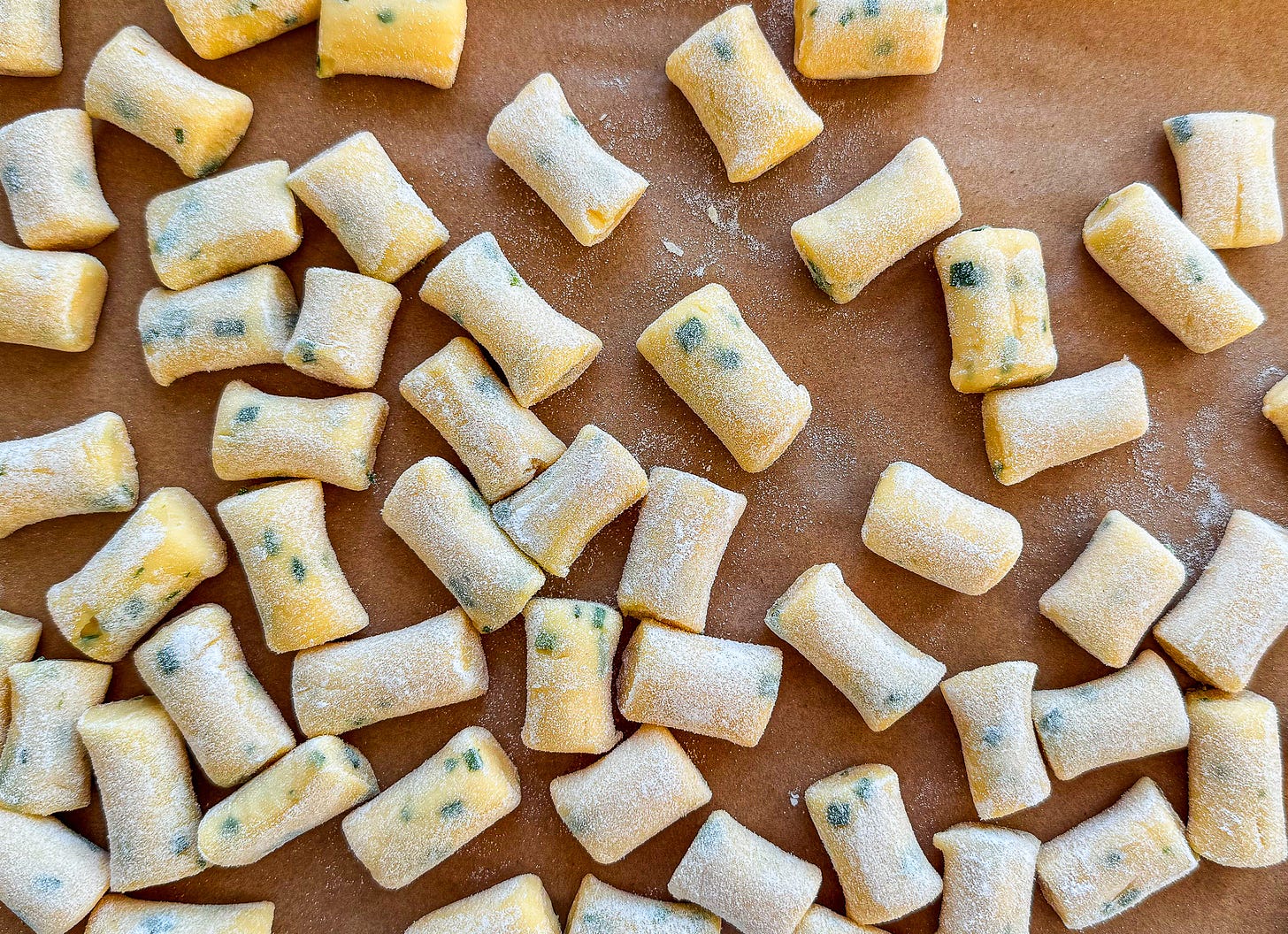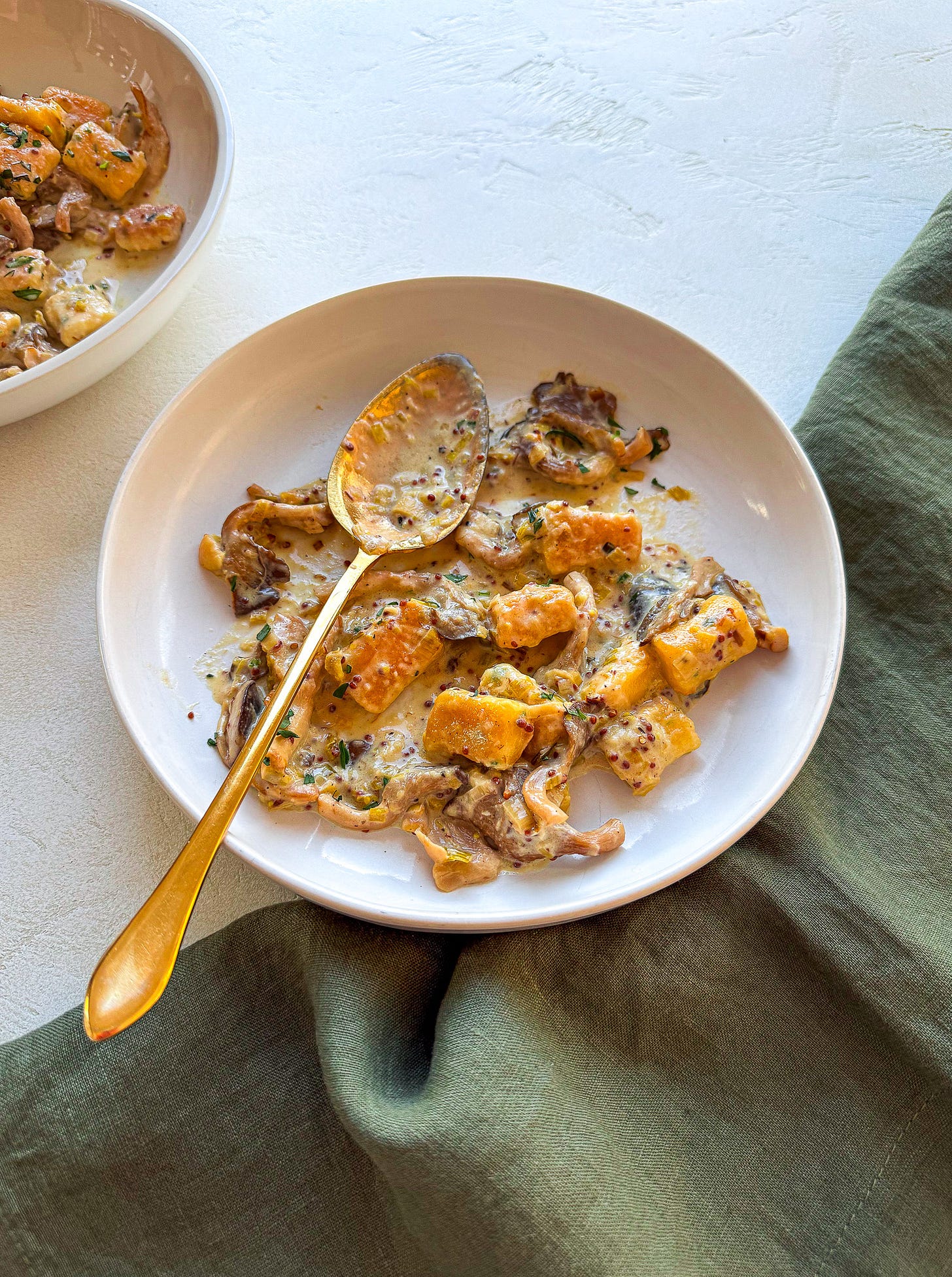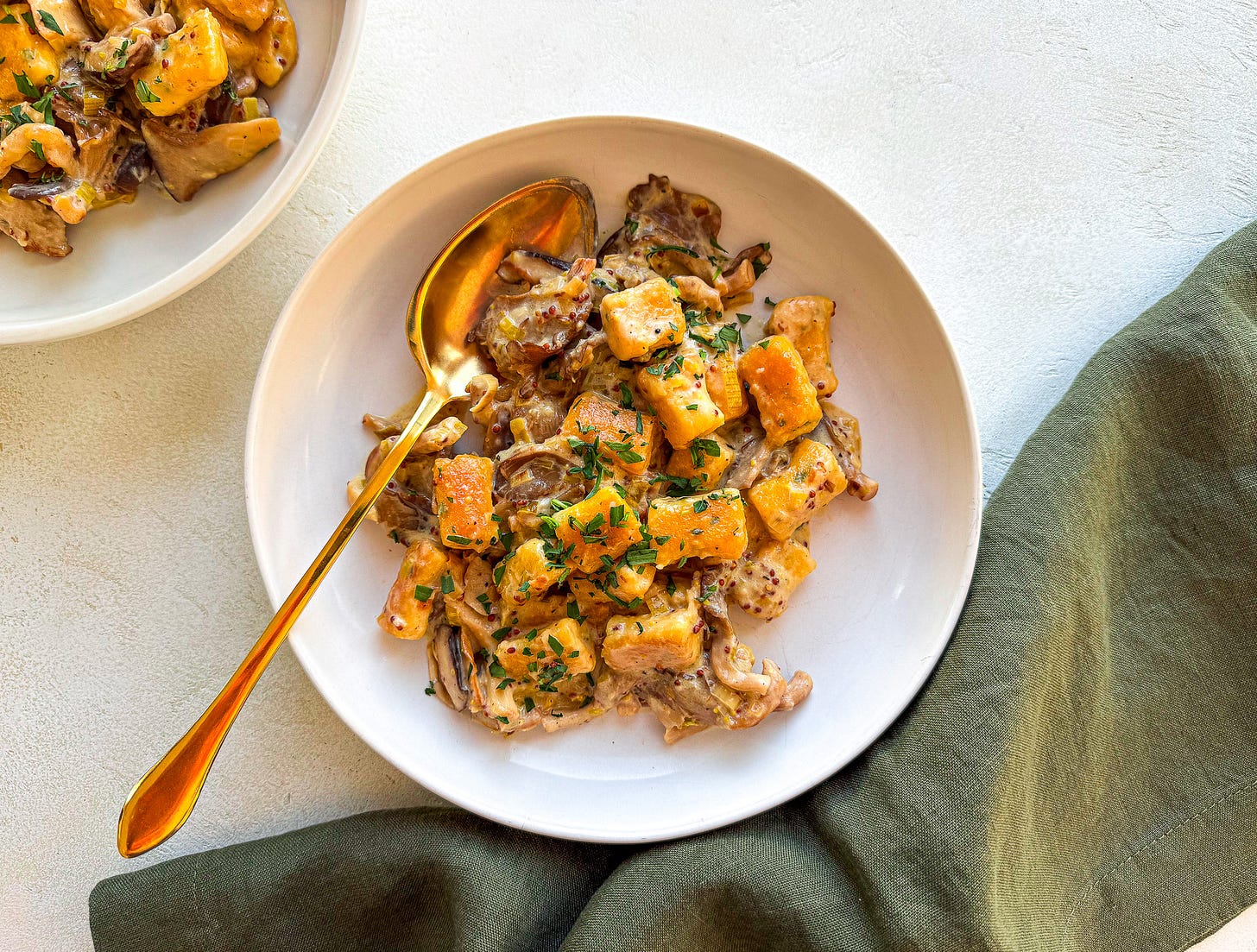parisian gnocchi with mushrooms, grainy mustard & tarragon
the pillowiest pillows & overcoming my fear of pastry
Before we jump in, a bit of exciting news: I’m finally, finally, after 6 years, relaunching my pasta-focused supper club! At its core, Pasta Social Club is about connecting with others and making friends around the table. I’m calling this iteration Pasta Night! and all dates for the spring season (April, May, June) are live on my website here.
So, if you’re based in (or near-ish, or visiting!) the Washington, D.C. area, I hope you’ll join me! Each month will feature a new multi-course menu (plus wine!), all Italian-inspired with a modern twist. I can’t wait to cook for you!
—Meryl
Hi, it’s me, Meryl, back with another installment of our European pasta series, and another niche gnocchi recipe. By now we all know that gnocchi, as with any genre of pasta, aren’t just one (potato) thing but many. And if you’ve been here even a little while, you’ve gotten a taste of that variety, from Emilia-Romagna’s weeknight-ready ricotta dumplings and Tuscany’s delicate gnudi to Trentino Alto-Adige’s bready canederli and Rome’s custardy discs of semolina. Today, though, we’re back in France with perhaps the lightest, fluffiest, pillowiest gnocchi of all: Parisian gnocchi, or gnocchi à la Parisienne.
There were many things that intimidated me when I started culinary school back in 2018—the knives were sharper, the burners hotter, the pots bigger—but none made me sweat as much as pastry. Custards and croissants don’t come naturally to me, and although I’m now more comfortable with those techniques, I’d still hardly call myself a baker. Which is why I’ve long avoided Parisian gnocchi, since they’re made not with potatoes, nor with ricotta, but with…pâte à choux. (To all my fellow non-bakers, please stick with me—if I can make these not only without incident but with ease, I assure you that you can, too!)
Pâte à choux, or choux pastry, is one of those fundamental cooking techniques that sounds more complicated than it is, both because of its name and because many recipes, well, make it more complicated than it is. Half dough, half batter, pâte à choux is a combination of hot water (or milk), butter, flour, and eggs, one that’s incredibly versatile and lends itself equally well to sweet (éclairs, cream puffs, profiteroles) and savory (gougères, gnocchi à la Parisienne). It’s also entirely unique in its texture, at once soft enough to pipe and thick enough to hold its shape. When baked, it puffs and crackles, like little cabbages (the name is, literally, “cabbage dough/paste,” but more likely derives from pâte à chaud, meaning “hot dough/paste”), but it can also be poached, fried, or boiled, like it is here, which turns it especially tender and light.
Although pâte à choux is undeniably French, its origins might be a little Italian, too. Legend has it that choux pastry was invented in the 16th century by “Pantanelli and Popelini,” Italian pastry chefs for Queen Catherine de’ Medici, who was married to King Henry II of France and often credited with having introduced Italian cuisine to her new home. We now know that this story is just a story, popularized in the 19th century; more accurately, a version of pâte à choux was created earlier, in the 14th century, when it was known as a type of cake called pouplin—the inspiration for the fictional “Popelini,” with “Pantarelli” derived from pâte. Still, although the pastry’s history is a bit murky (with similar recipes coming from Spain and Austria), the pâte à choux we know today does have royal ties, attributed to chefs Jean Avice and Antonin Carême, the latter of whom worked for Marie Antoinette. So regardless of when and where it’s really from, pâte à choux has been fundamental to French cooking for a long, long time.
When approaching today’s recipe, I decided to use my trepidation toward pastry to my advantage. Instead of giving into the fear, I let it propel me into creating the simplest, most fool-proof Parisian gnocchi possible. Not only was I determined to make an easy, breezy pâte à choux, but I also wanted to streamline the technique for making the gnocchi themselves: Typically, Parisian gnocchi are made spaetzle-style, by simultaneously piping and cutting bite-sized dollops of dough directly into simmering water. But this method can be stressful and a test in coordination (of which I have none, by the way). Trying to cut through a sticky dough-slash-batter while holding a piping bag over hot water is one thing, but trying to do so quickly to ensure the gnocchi cook evenly is a whole other thing. That’s a big ask, even for me (okay, especially for me), and one I’d wager has turned many a home cook far, far away from gnocchi à la Parisienne. So I decided to take that technique, throw it out the window, and go back to my Italian gnocchi-making roots. I won’t spoil all the fun here, but I will say that thanks to a little help from your freezer, you can cut and cook these gnocchi at your leisure, no sticky knives or stovetop hovering required.
As with any gnocchi, there are many ways to enjoy these Parisian-style dumplings. They can be boiled, baked, or pan-fried (always my preference!); they’re usually dressed with butter and cheese and herbs, though any sauce you’d pair with pasta would work well. Here, I’ve gone full French and opted for mushrooms, cream, tarragon, and—my favorite part—a spoonful of whole grain Dijon mustard. All flavors that work beautifully with these slightly nutty, crisp-yet-tender gnocchi. So beautifully, in fact, that not only am I no longer afraid of making gnocchi à la Parisienne, but I think they might be my favorite gnocchi yet.
Parisian-Style Gnocchi (Gnocchi à la Parisienne) with Mushrooms, Grainy Mustard & Tarragon
Serves 2 to 4







